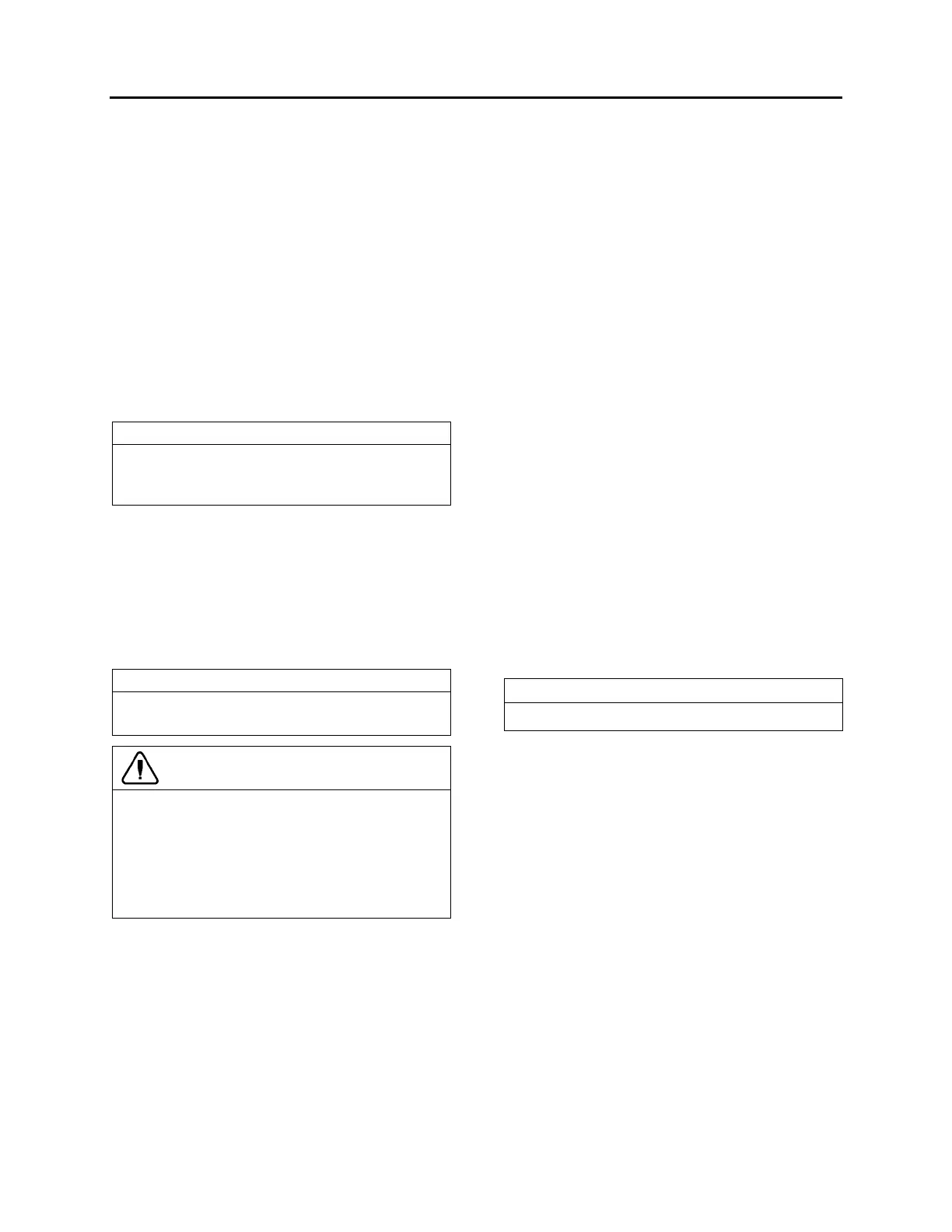Section 16: SUSPENSION
PA1562
23
3.16.3 Front Wheel Camber
Positive camber is the outward inclination of the
wheels at the top, negative or reverse camber is
the inward inclination of the wheels at the top.
Camber variations may be caused by wear at
the wheel bearings, wheel spindle bushings, or
bent suspension parts.
Check camber, with an accurate gauge. If
camber is incorrect, check suspension parts for
wear and replace worn parts. If wear is not
perceptible, suspension parts may be bent or
lower suspension arm may be improperly
shimmed.
Check King pin inclination. If King pin inclination
is incorrect, readjust the camber and check king
pin inclination again.
NOTE
Camber is more important than king pin
inclination, so adjust camber and verify king
pin inclination.
Shim the lower suspension arm to adjust
camber. If the king pin inclination is incorrect,
the wheel king pin assembly may be bent and
therefore should be replaced.
Excessive positive camber results in irregular
wear of the tires at the outer shoulders.
Negative or reverse camber causes wear at the
inner shoulders.
NOTE
Shim only the lower suspension arm to adjust
the front wheel camber.
CAUTION
Once the perfect shim combination is
achieved, always install new stover nuts
because the self looking effect is lost after
tightening and loosening of the nut. It is
recommended to punch marks to detect
loosening of the nuts during future visual
inspections.
3.16.4 Front Wheel Toe-In
Toe-in is measured from the center of the tire
treads. Measurements at the front and rear of
the tires must be made at the same height from
the floor. Incorrect toe-in results in excessive tire
wear and steering instability with a tendency to
wander.
Toe-In Check
1. Check the camber adjustment and adjust if
necessary.
2. Hoist the front of the vehicle and spin the
wheels marking the centerline of the tire
treads.
3. Place the wheels in the straight ahead
position and lower the vehicle to rest on the
floor.
4. Roll the vehicle ahead several feet. This
removes any slack caused by looseness in
the wheel bearings or steering connections.
5. Check the distance between the tire
centerlines at the front and rear of the front
tires. These two measurements must be
made at the same height above the floor.
The front measurement must be 3/32 ±1/32
of an inch less than the rear measurement.
Toe-In Adjustment
1. Loosen the tie rod clamp bolts.
2. Using a pipe wrench, turn the tie rod tubes
to obtain the toe-in measurement specified
in step 5 under paragraph "Toe-in Check"
of this section.
3. Tighten the tie rod clamp bolts and recheck
toe-in.
4. Check that the angular relationship of the
pitman arm to the steering gear is as shown
in figure 17.
NOTE
Use only tie rods to adjust toe-in.
3.16.5 Front Axle Caster
Positive caster is the inclination of the top of the
king pins toward the rear of the vehicle.
Negative or reverse caster is the inclination of
the king pins toward the front of the vehicle. This
vehicle is designed with positive caster. The
purpose of caster is to provide steering stability
by keeping the wheels in a straight ahead
position.
Caster variations may be caused by bent upper
suspension arm, lower suspension arm, or king
pin housing. Caster should be adjusted with
shims. Precision instruments should be used to
measure caster. Shim bell crank and idler arm to
adjust caster.
Variations from the specified caster will affect
steering stability, cause wandering, wheel
shimmy, and reduce returnability when pulling
out of curves.

